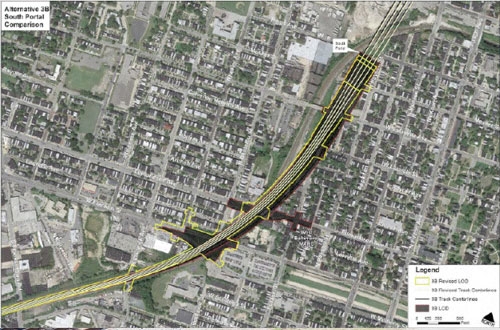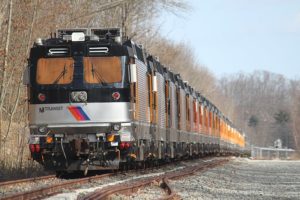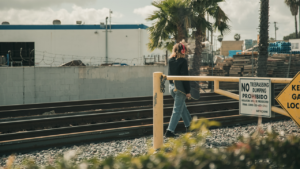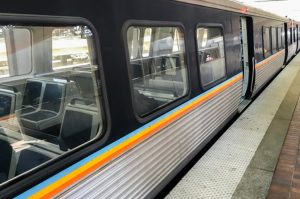B&P Tunnel proposal revised following community input
Written by Jenifer Nunez, assistant editor
The Federal Railroad Administration (FRA) has revised the proposal to replace the Civil War-era Baltimore and Potomac (B&P) Tunnel based on feedback provided to the FRA by Baltimore residents.
In December 2015, the FRA presented three options for replacing the tunnel in a Draft Environmental Impact Statement (EIS). Based on feedback during three recent meetings in February and 19 public hearings, open houses, project and community association meetings during the past two years, two options have fallen (Alternative 3A and Alternative 3C) from consideration and FRA will make several significant changes to Alternative 3B in the Final EIS.
“Rebuilding the B&P Tunnel is a significant undertaking and it is our responsibility to incorporate input from everyone it will serve and affect,” said U.S. Transportation Secretary Anthony Foxx. “I encourage everyone to stay involved and provide feedback during the two open forums.”
FRA will host one more public hearing to gather additional feedback from residents and stakeholders April 16.
FRA’s proposed changes include not placing the vent plant where a community garden is located and instead seeking community input for a location along North Avenue; reducing the number of parcels of land and historic properties impacted; decreasing relocations; improving the West Baltimore MARC station to be larger and American with Disabilities Act compliant and shifting the new tunnel closer to the existing tracks. The proposed tunnel would be an average of 115 feet deep underground in comparison to the average 20 feet of the current B&P Tunnel. The deeper tunnel would nearly eliminate any noticeable vibrations from passing trains.
“The changes that the FRA is proposing based on the feedback provided by citizens in Baltimore will reduce the impact to the communities and make the project stronger and better,” said FRA Administrator Sarah Feinberg. “FRA remains committed to listening to and working with residents in Baltimore as the project moves forward and we hope everyone will stay engaged.”
One hundred and forty Amtrak and MARC trains travel daily through the tunnel that is part of the Northeast Corridor. While Amtrak owns the tunnel, FRA is leading the EIS process in cooperation with Maryland’s Department of Transportation.
The federal government has invested $60 million for the preliminary design and environmental review of the project. The state of Maryland estimates 7,000 jobs a year over seven years will be created or supported and more than 50 percent of those jobs will be in construction.





